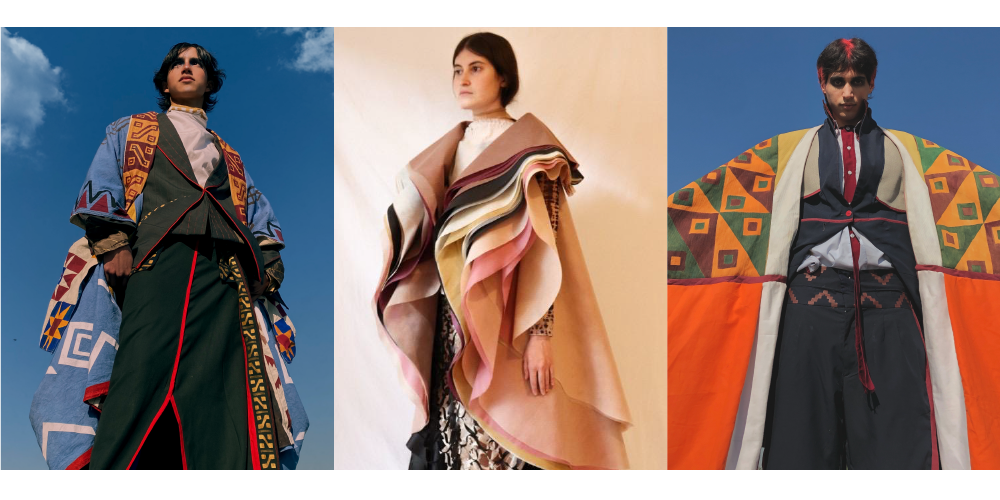Fashion Show "The incas: Beyond an Empire"
by Cátedra Saltzman (FADU - UBA)
Since 2010, the Saltzman Chair of Fashion Design at FADU-UBA has collaborated with Fundación Proa. This partnership materializes through the work of the Chair, supported by Proa's Education Department, enriching aesthetic content and reflection through contemporary art.
This synergy has inspired outstanding projects and performances in connection with exhibitions such as Minimalism and Conceptualism (2019); Labyrinths (2022); Bodies, Weaves, and Territories (2023); and Futurism (2010); as well as on artists like Joseph Beuys (2015), Yves Klein (2016), and Malevich. This year, students and professors are exploring the wealth of Inca culture, using the pieces in "The Incas: Beyond an Empire" as inspiration and documentation. This intervention, with a runway show concept, involves all levels of the Chair through various exercises and frameworks related to the exhibit.

In Project I, students developed three proposals: first, exploring the relationship between the body and different iconographies, including ceramics and textiles, through textile anatomy like tattoos that evoke pieces in the galleries. They also worked with fabric to create masks that represent the different regions connecting identity and culture, incorporating quipus as a distinct language of these people. Finally, they focused on garments that recreate the cuts of queros as three-dimensional skins that wrap around bodies, creating movement and layering.
In Project II, students also began with three exercises: the first centers on Inca imaginaries through three-dimensional outerwear, with an interior-exterior interplay that blends with our territory, using tailoring to support this duality and generate new identities. Another exercise focuses on movement, dance, and transformation, emphasizing shine and color and exploring spatial transformations to the limit. The final exercise integrates the neighborhood of La Boca through transformative strategies, adapting to create costumes that evoke the imagery of the murga.
In Project III, identity and territory were addressed more subtly, focusing on flexibility, adaptation, and the dress’s interplay with the body, drawing inspiration from the geometric characteristics of classic Inca clothing. They aimed to connect the Incas with La Boca through denim recycling and soccer jerseys, highlighting the identity of the body-character.
In this joint action, which has become a tradition for locals and art and design enthusiasts, Fundación Proa, La Boca, and FADU-UBA aim to reweave a rich, vital tapestry that invites the reinterpretation of artistic production in the exhibition.